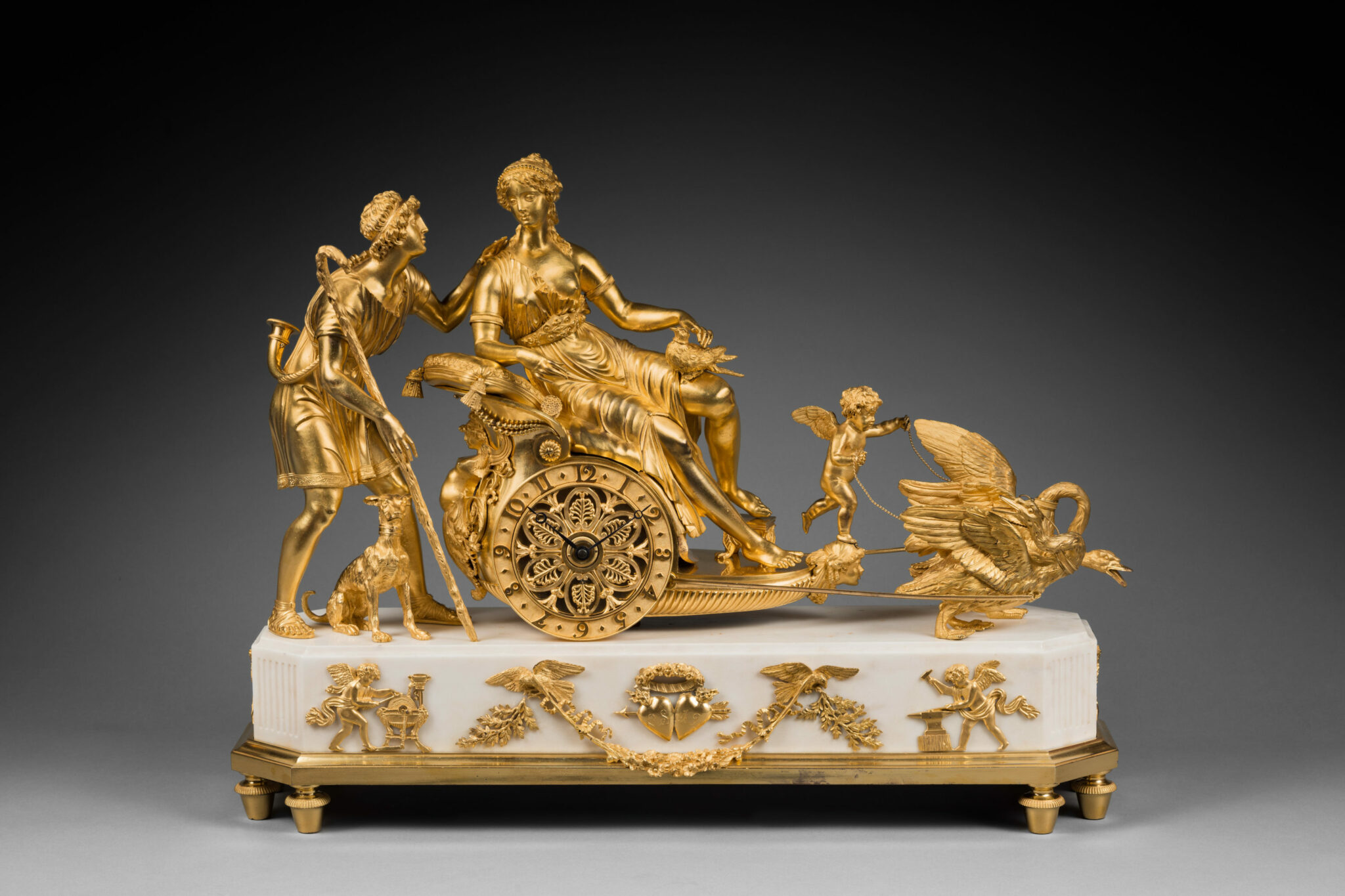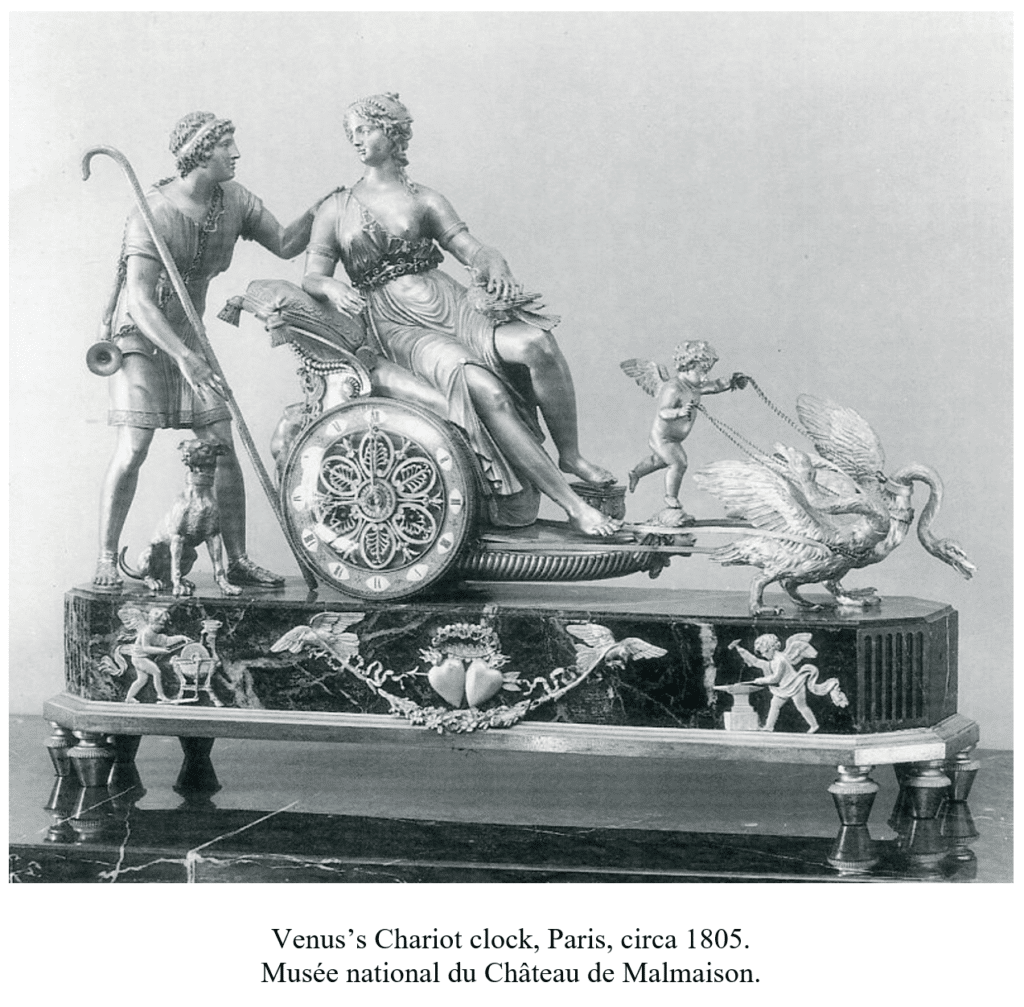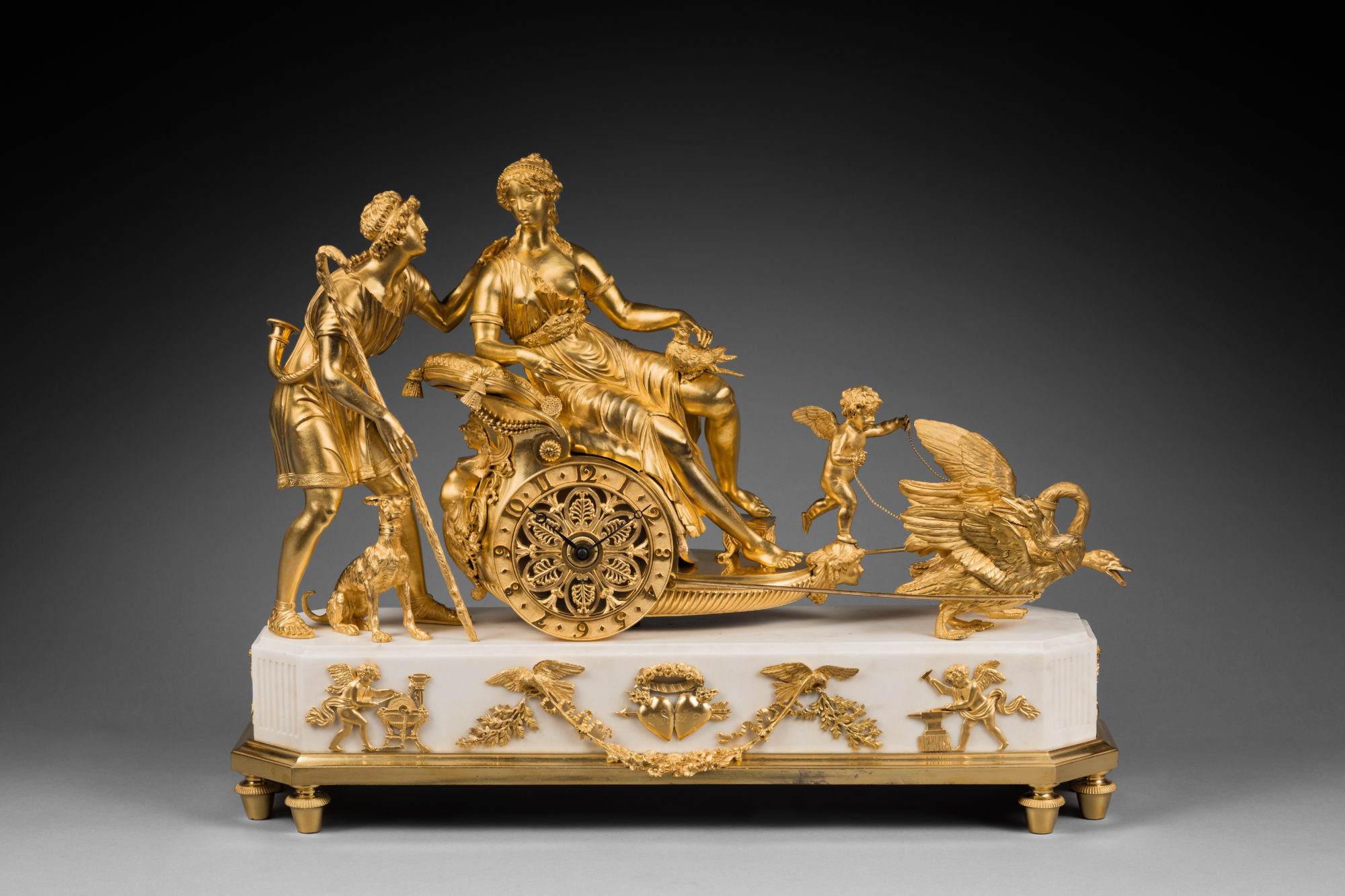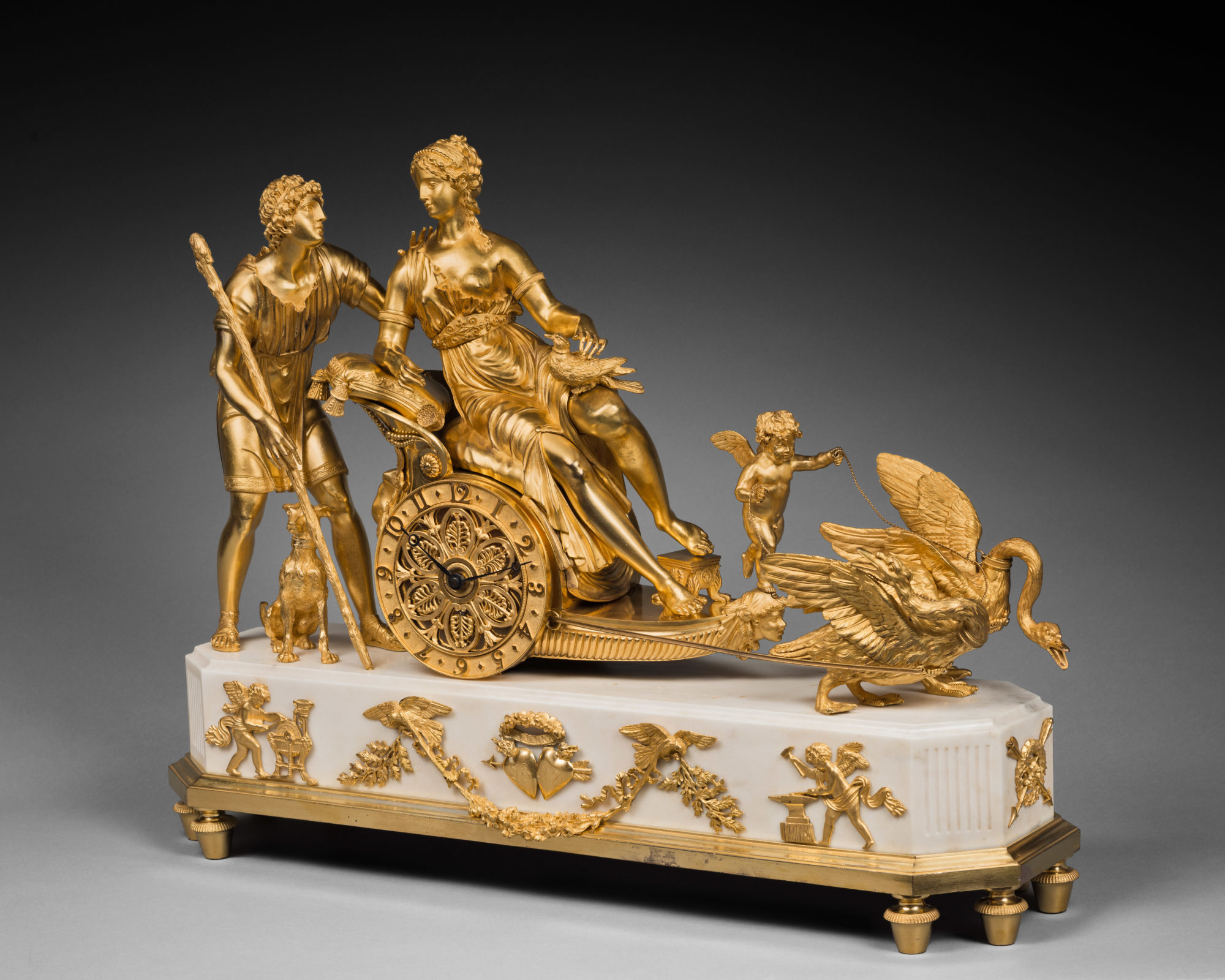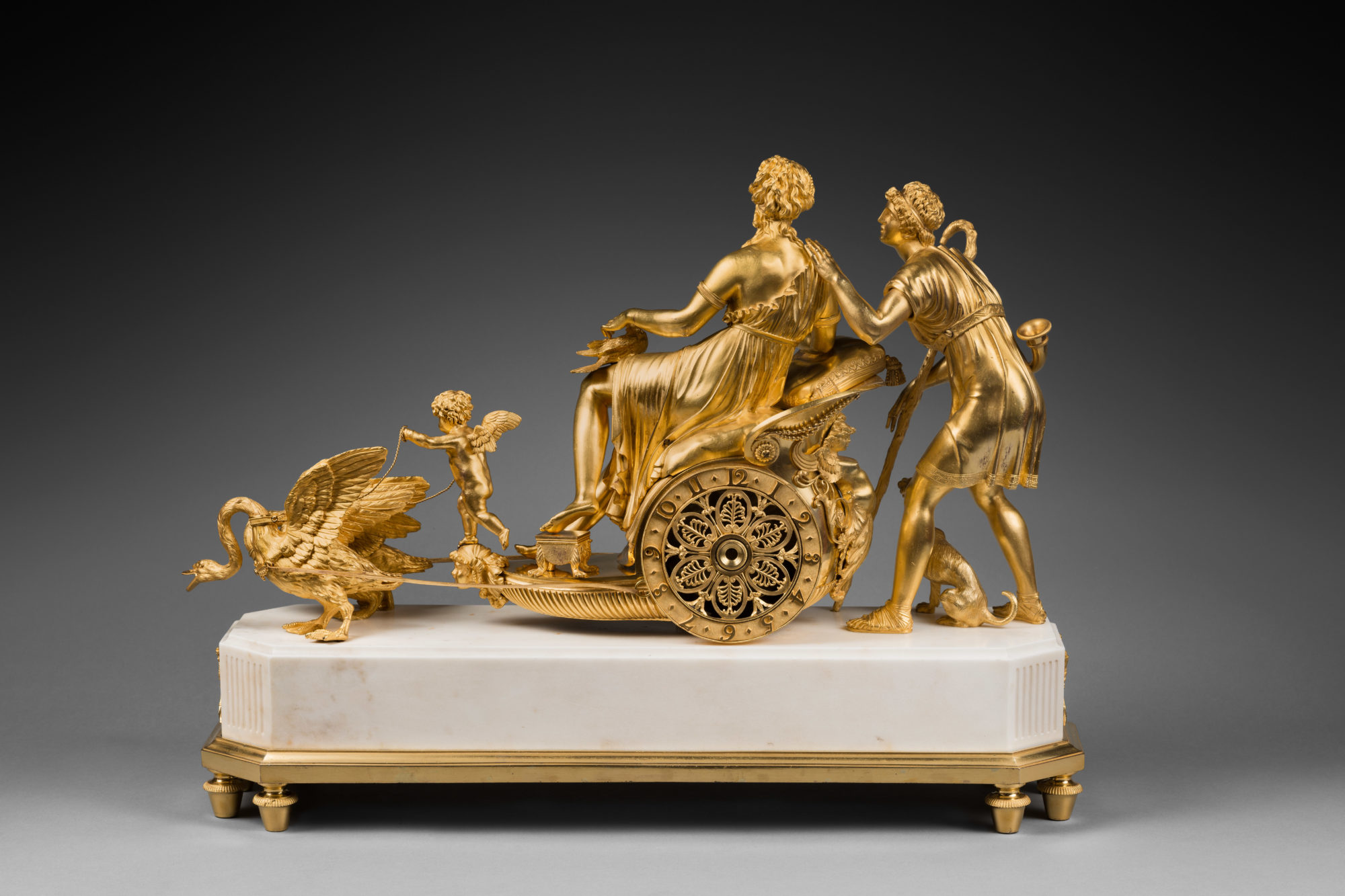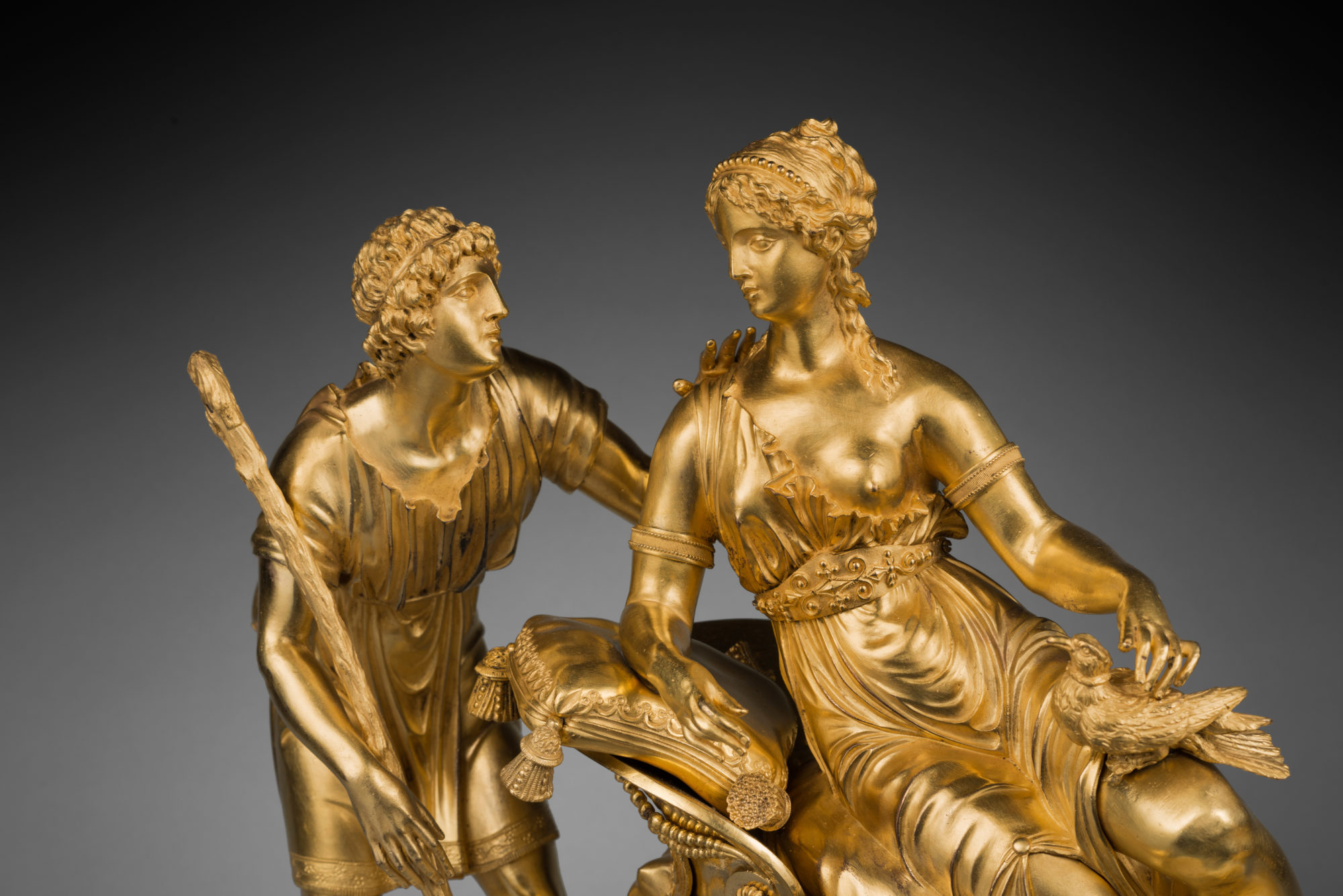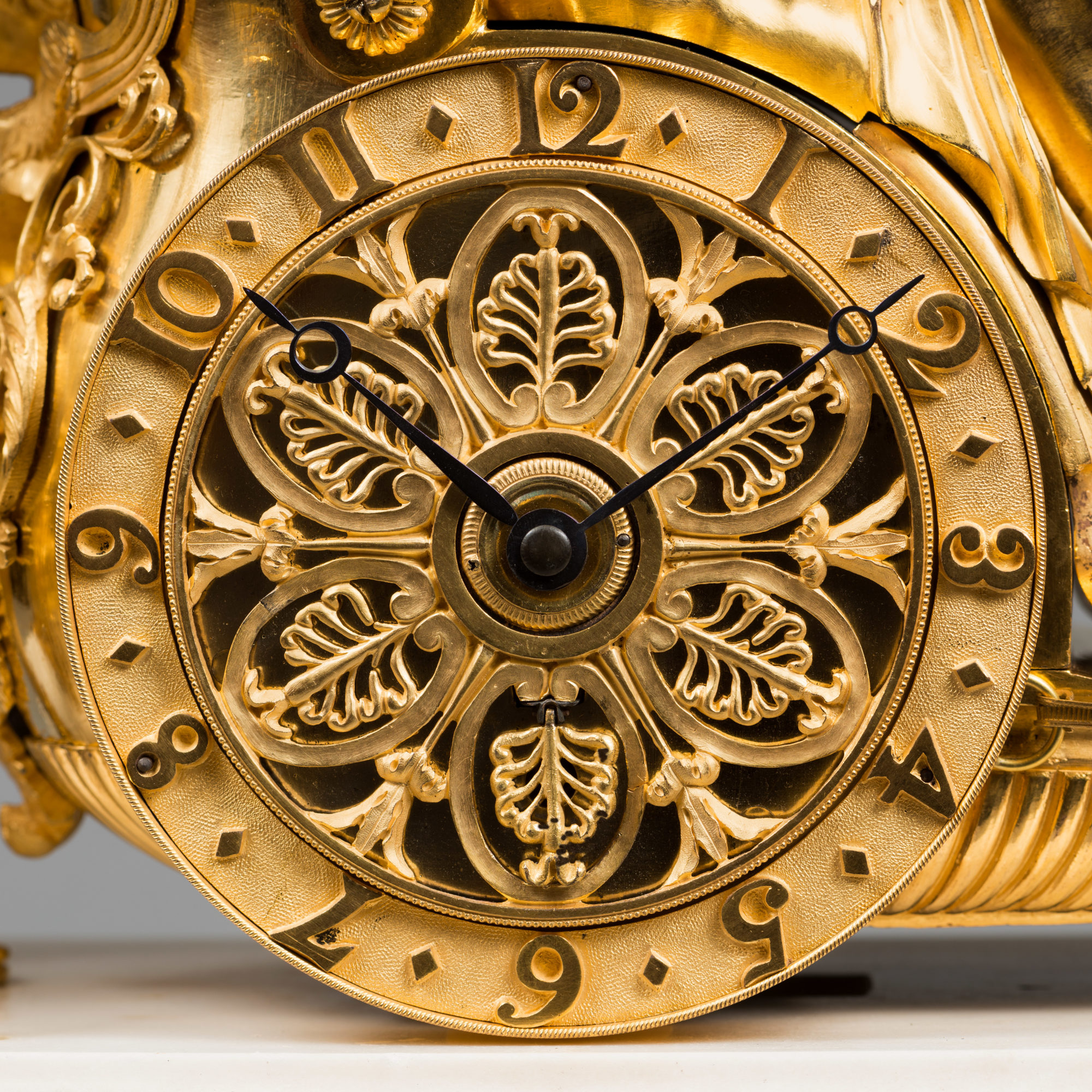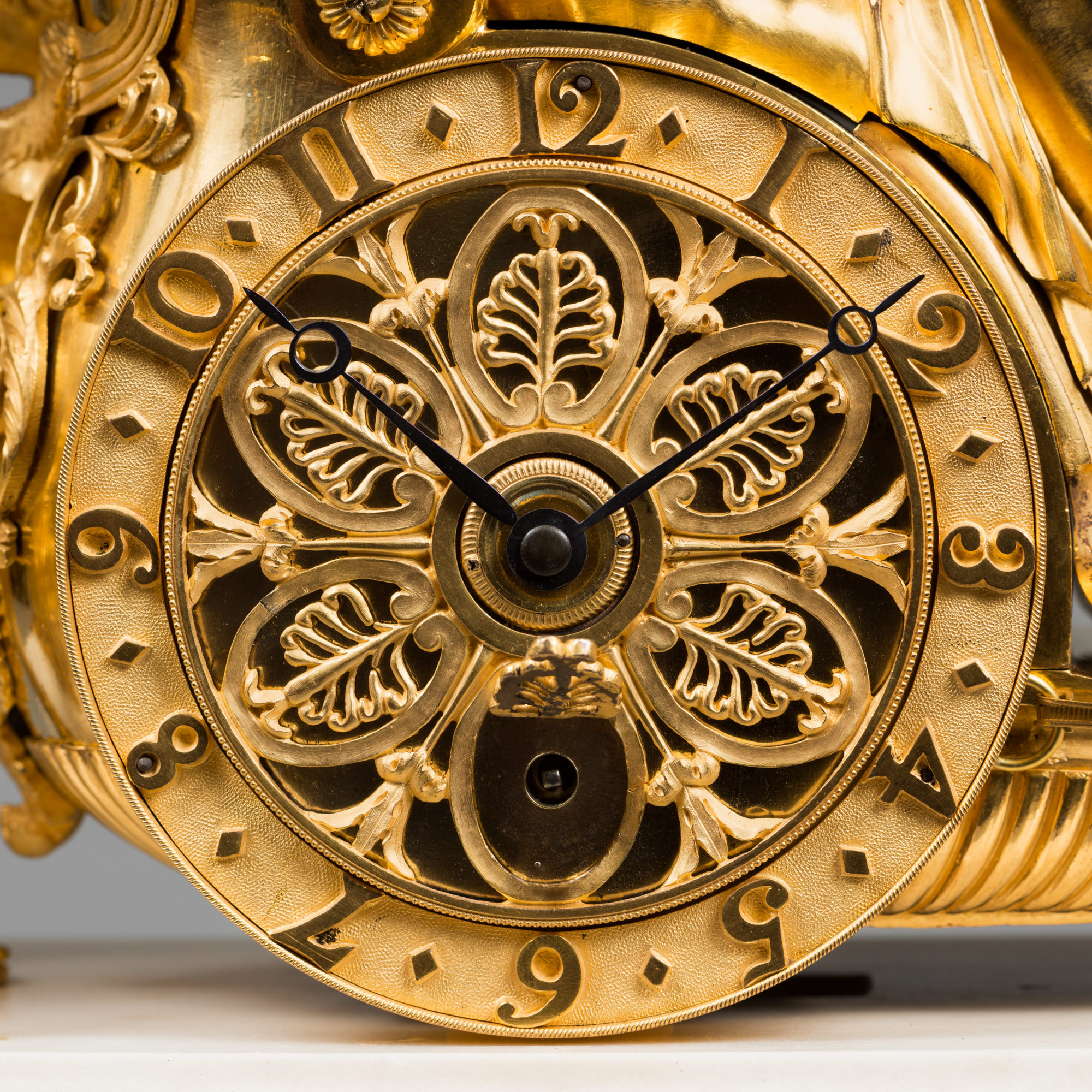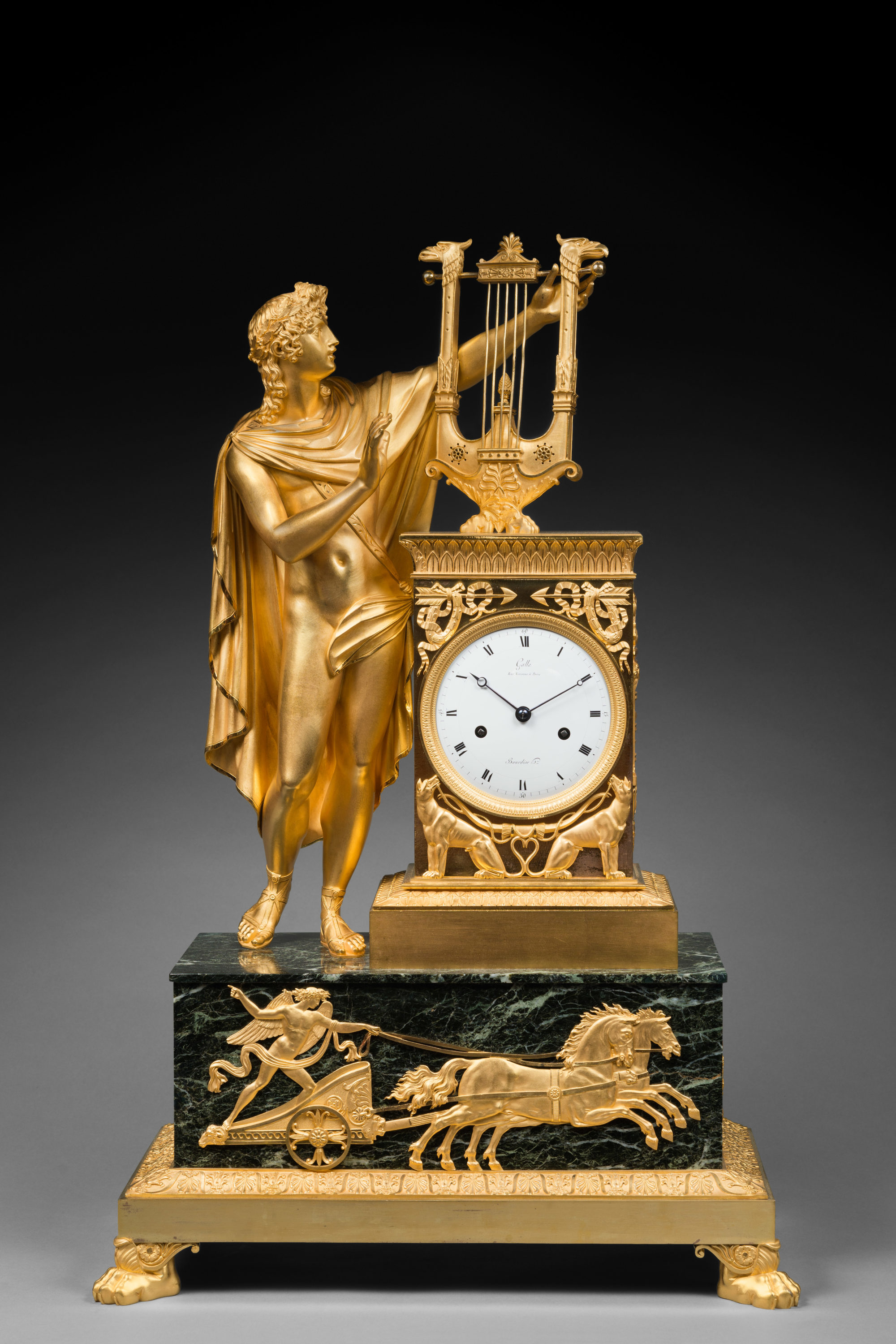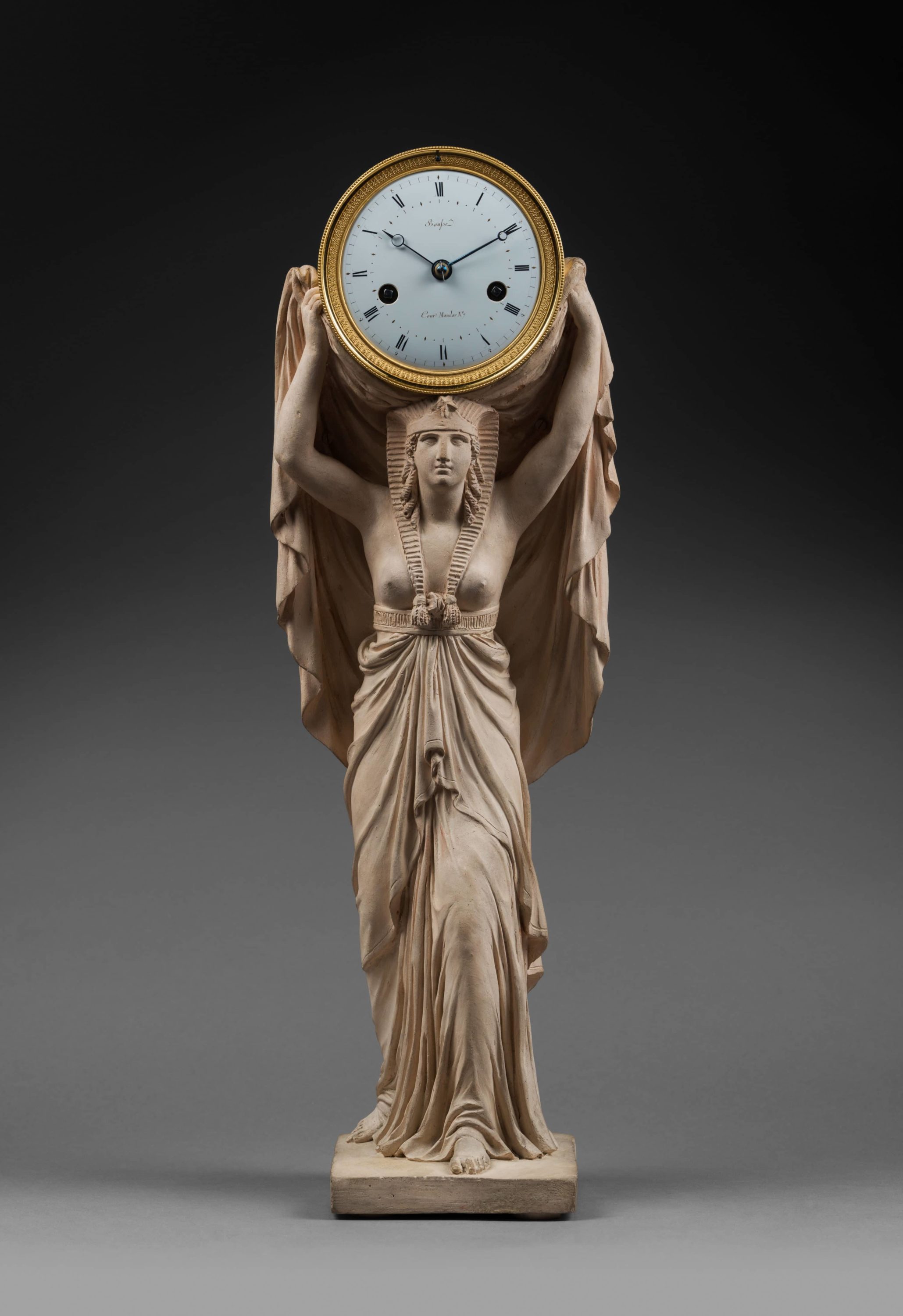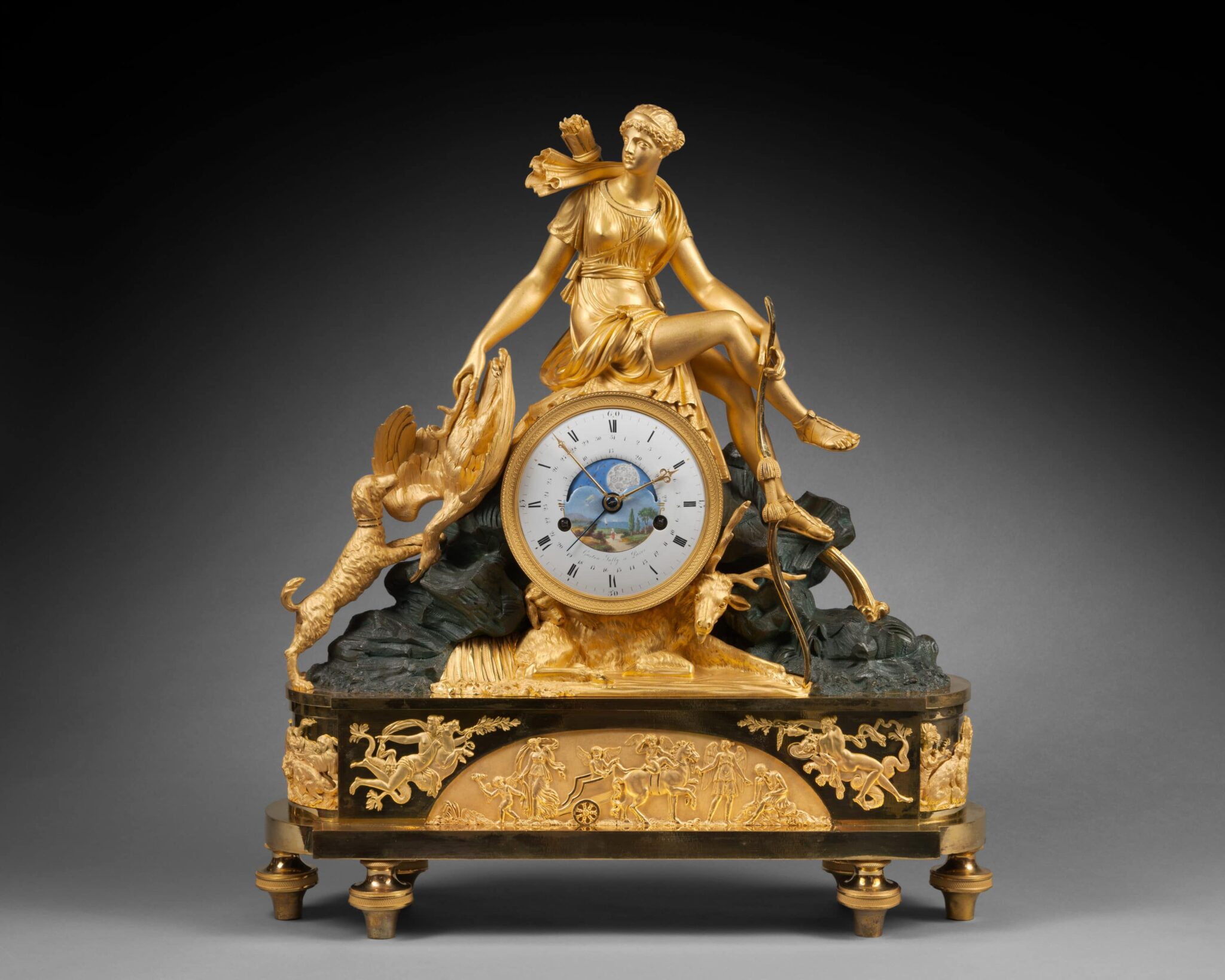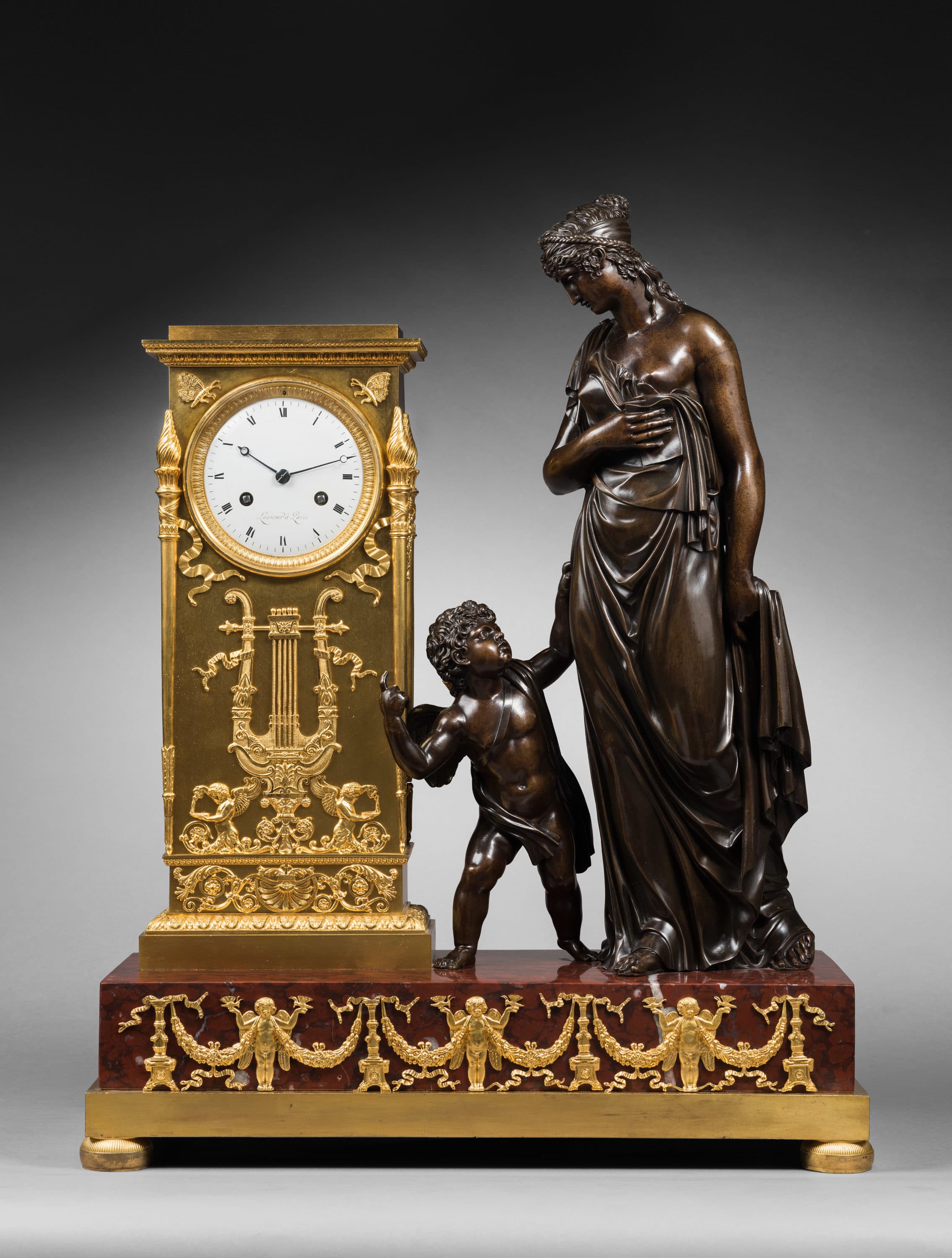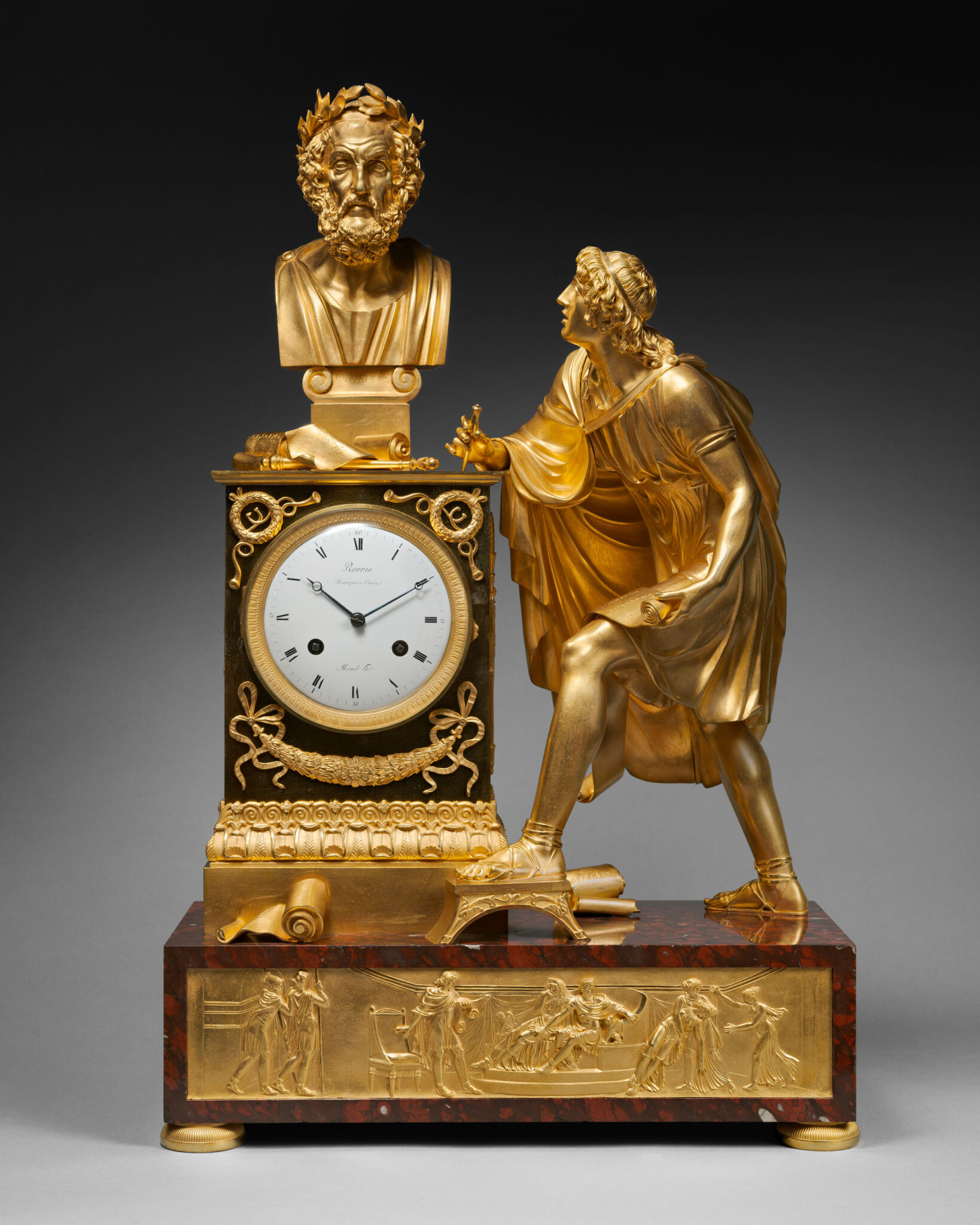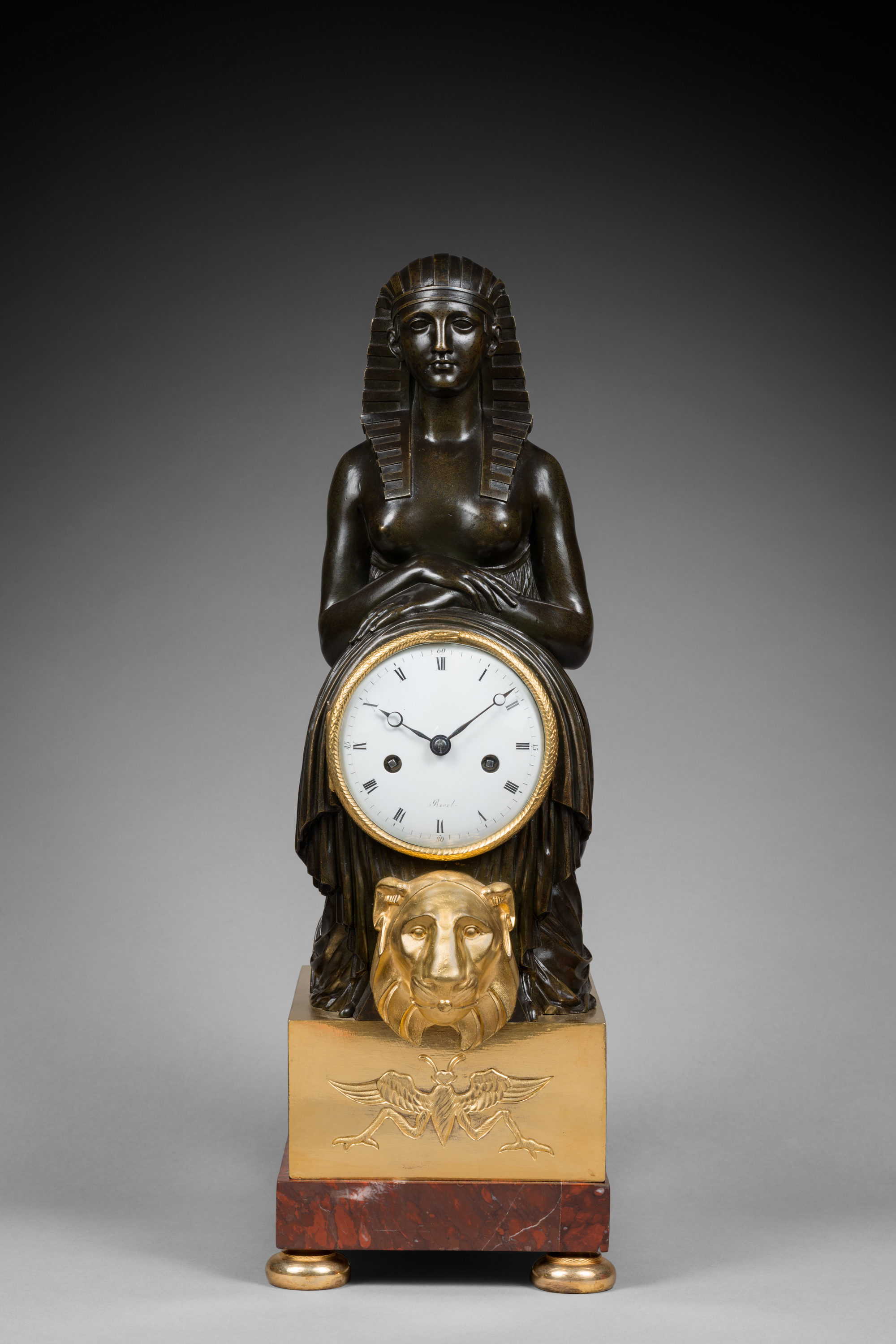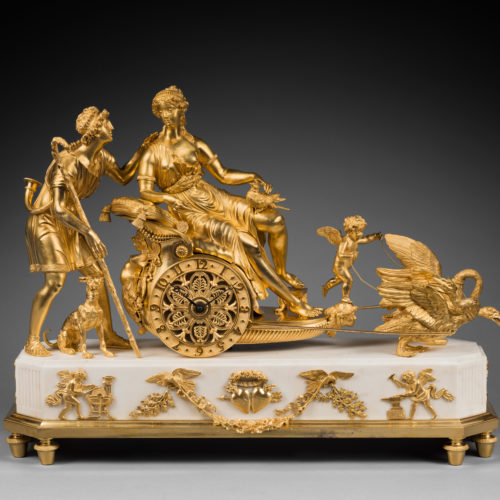Rare Gilt Bronze and White Carrara Marble Mantel Clock
“Venus’s Chariot with Paris”
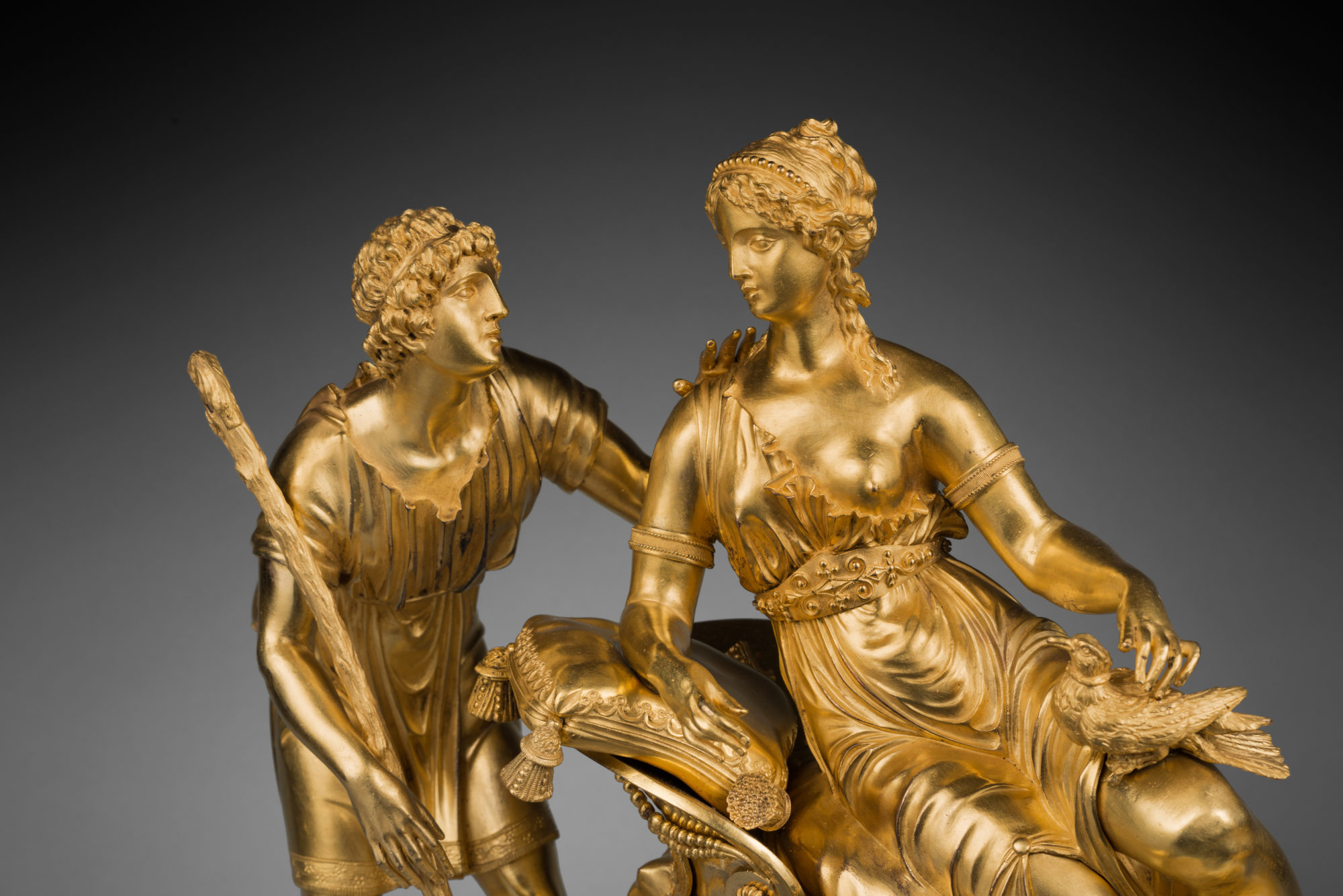
Model Attributed to André-Antoine Ravrio
France and England, Empire period, circa 1810
The pierced dial indicates the Arabic numeral hours and minutes by means of two blued steel Breguet hands. The movement is fitted in the wheel of a chariot, whose center is decorated with alternating palmettes and flowers. A young woman wearing a belted antique tunic is riding in it, sitting in a stylized shell. An allegory of the goddess Venus, she has a dove perched on her left knee. She is turning toward a young man who is dressed in a short classical tunic, with laced sandals and a horn slung across his back. He represents the shepherd Paris, as shown by the long stick he is holding, and the dog seated at his feet. At the front of the chariot stands the young Cupid, holding the reins of the chariot, which is drawn by two swans with outstretched wings and curving necks. The quadrangular white Carrara marble base has canted and fluted corners. It is adorned with applied motifs including a Cupid sharpening a knife and a Cupid forging metal, with a central motif of two doves holding leafy garlands in their beaks and two hearts pierced by an arrow, engraved with initials and surmounted by a rose wreath. The clock is raised upon eight tapering, knurled feet.
Discover our entire collection of antique french empire mantel clocks for sale online or at the gallery.
La Pendulerie is the specialist in fine and rare antique clocks, based in Paris.
The remarkable design of this clock may be confidently attributed to André-Antoine Ravrio, who in 1809 delivered an identical clock to the Elysée Palace. However, if the mounts were clearly made in Paris, certain technical details, including the manner of assembling the elements and movement, display an English influence. This suggests that the elements were ordered in Paris by an important British clockmaker and subsequently assembled in England. That clockmaker may have been Benjamin Vulliamy (1747-1811), certain of whose creations show a distinct French influence.
Among the small number of identical clocks known to exist today, one example, almost certainly from the collection of Napoleon’s mother Madame Mère, is today on display in the Musée national du Château de Malmaison (illustrated in B. Chevallier, La Mesure du Temps dans les collections du Musée de Malmaison, RMN, Paris, 1991, p. 20, catalogue n° 11). A second clock, which corresponds to the model described in 1809 as standing in the drawing room of the Murat family in the Elysée Palace, and which is today part of the collection of the Mobilier national in Paris (see M-F. Dupuy-Baylet, Pendules du Mobilier national 1800-1870, Editions Faton, Dijon, 2006, p. 25). One further such clock was estimated at 650 francs in December 1815, in the probate inventory of Michel Ney, the famous Napoleonic Marshal, whom the Emperor called “the bravest of the brave”: “A clock representing the chariot of Venus, drawn by swans and driven by Cupid, with the handsome Paris, standing on a green marble base with gilt bronze ornaments, which gilt bronze clock with striking indicates the hours and has a pierced enamel dial.”
André-Antoine Ravrio (1759 - 1814)
Received master bronzier in 1777, Antoine-André Ravrio was one of the most important Parisian bronze-casters of the late 18th century and the First Empire. Main supplier to the Imperial Garde-meuble, Ravrio worked alongside Pierre-Philippe Thomire and Claude Galle on the refurbishment of the main residences of Emperor Napoleon and Empress Josephine, as well as supplying numerous bronze furnishings for the influential figures of the time, including a number of the Empire’s Marshals. Today, some of his work can be found in the collections of the Mobilier National in Paris, as well as in major international public and private collections.
